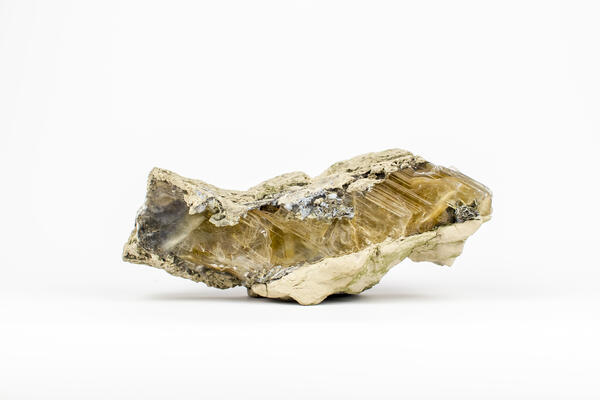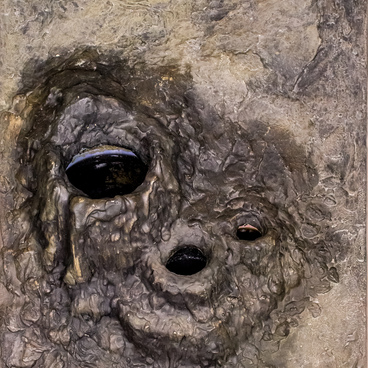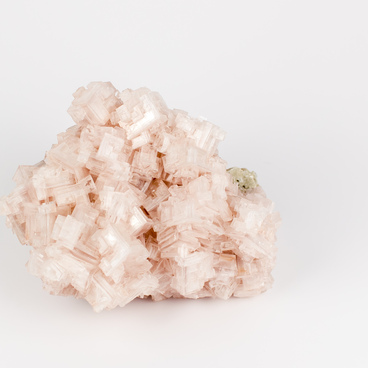Gypsum is one of the most common natural minerals. Its name comes from the Greek word ‘gypsos’, which means ‘chalk’. Extensive deposits of gypsum are found in sedimentary rocks, most often near deposits of rock salt. This mineral can be colorless, white, or colored. It is so soft that it is easy to process or even scratch it with a nail.
In ancient times, people used gypsum as a fertilizer in the fields and a construction material. They called a fine-grained variety of this material alabaster and often used it in plastic arts. This mineral was also popular among Assyrian masters. Giant figures of gods, kings, lions, and mythical winged bulls with human heads were carved out of alabaster. A fibrous variety of gypsum, selenite, was used for small jewelry, figurines, candlesticks, and jewelry boxes.
Nowadays, different types of gypsum are used in medicine, construction, chemical, and other industries. They are also used to make expensive grades of paper.
Large deposits of gypsum in the Republic of Tatarstan are found on the right bank of the Volga, in the Kamsko-Ustinsky district. A piece of gypsum ‘Mary’s Glass’ was discovered in the surrounding area of the Antonovka village. This gypsum is now housed in the collection of the Natural History Museum of Tatarstan.
“Mary”s Glass” is a kind of transparent gypsum crystal, sometimes with mother-of-pearl or colored tint. Some people claim that in the old days, this material was used for the design of icons. However, some scientists disagree with this statement. There is not a single image with such decor in the museum collections, and the plates obtained during the processing of “Mary”s Glass” are too small for such work.
Sometimes twisted or curved crystals are found in gypsum deposits. They form unusual shapes that look like fantastic plants. That is why they were called “gypsum flowers”. The most famous of these forms is the “desert rose”. It occurs in layers of sand or soil and resembles a rosette of many petals. In some countries, it is a tradition to present “desert roses” on Valentine’s Day as a symbol of eternal love.
In ancient times, people used gypsum as a fertilizer in the fields and a construction material. They called a fine-grained variety of this material alabaster and often used it in plastic arts. This mineral was also popular among Assyrian masters. Giant figures of gods, kings, lions, and mythical winged bulls with human heads were carved out of alabaster. A fibrous variety of gypsum, selenite, was used for small jewelry, figurines, candlesticks, and jewelry boxes.
Nowadays, different types of gypsum are used in medicine, construction, chemical, and other industries. They are also used to make expensive grades of paper.
Large deposits of gypsum in the Republic of Tatarstan are found on the right bank of the Volga, in the Kamsko-Ustinsky district. A piece of gypsum ‘Mary’s Glass’ was discovered in the surrounding area of the Antonovka village. This gypsum is now housed in the collection of the Natural History Museum of Tatarstan.
“Mary”s Glass” is a kind of transparent gypsum crystal, sometimes with mother-of-pearl or colored tint. Some people claim that in the old days, this material was used for the design of icons. However, some scientists disagree with this statement. There is not a single image with such decor in the museum collections, and the plates obtained during the processing of “Mary”s Glass” are too small for such work.
Sometimes twisted or curved crystals are found in gypsum deposits. They form unusual shapes that look like fantastic plants. That is why they were called “gypsum flowers”. The most famous of these forms is the “desert rose”. It occurs in layers of sand or soil and resembles a rosette of many petals. In some countries, it is a tradition to present “desert roses” on Valentine’s Day as a symbol of eternal love.



